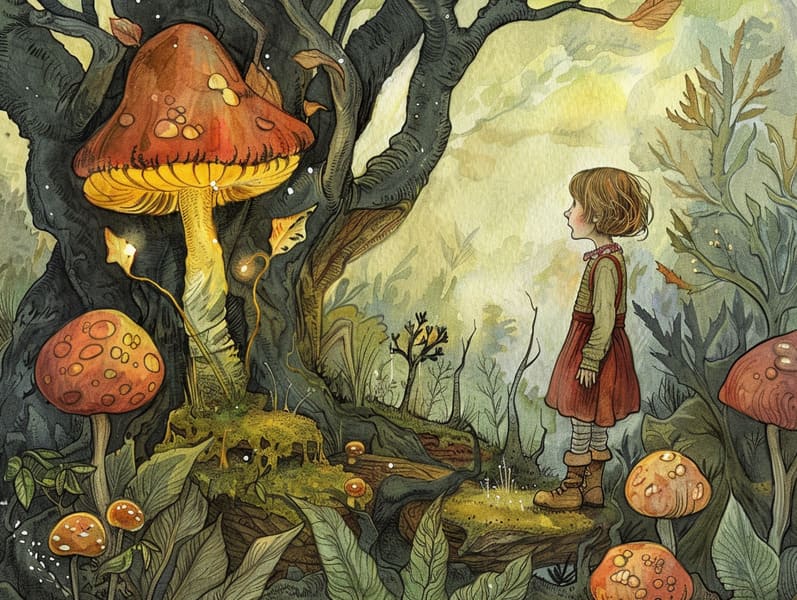The Story Behind Famous Fairy Tales and the Immortal Enchantment.

Historical fairy tales have old origins. These stories have been spoken from one generation to the next millennia before they were ever written down. They developed from a variety of societies, including European traditions. They were initially narrated among mature audiences, often carrying themes and messages concerning the societal norms and beliefs of the time.
Jacob and Wilhelm Grimm, the two Grimm brothers, were among the first to gather many of these beloved narratives. Their volume, "Grimm's Fairy Tales," included narratives like "Cinder Maid," "The Story of Hansel and Gretel," and "Snow White," which have since become essentials in the world of beloved fairy tales. Similarly, Andersen's imaginative fairy tales, such as "The Little Mermaid," and "The Little Duckling," have captured hearts worldwide, establishing their place in the pantheon of treasured fairy tales.
Despite their age, these tales remain as significant as ever, especially as kids' bedtime tales. These delightful tales are now available in multiple formats, including vividly illustrated books, charming animations, and online fairy tales.
Their lasting presence can be traced to several captivating elements:
Vital Lessons: Ancient fairy tales often provide important moral lessons. Stories like "The Story of the Boy Who Cried Wolf" teach the merit of sincerity, while "The Tortoise and the Hare" highlight the qualities of steadfastness and unassuming nature. These narratives offer the young clear distinctions between moral and immoral, building their moral compass in a tender yet important way.
Compassion and Knowledge: Classic fairy tales frequently feature heroes facing obstacles and hardships, urging listeners to identify with their struggles and champion their triumphs. For instance, "Beauty and Her Beast" illustrates the merit of looking past the exterior to perceive the true being of a character, developing compassion and perception.
Cultural Comprehension: Many fairy tales are rich in the cultural contexts from which they bloomed. Engaging with these fairy tales can provide fascinating glimpses into different customs, developing a sense of world insight and comprehension.
Inventiveness and Fantasy: The enchanted elements in classic fairy tales—supernatural elements—fuel children’s creative minds. These narratives transport readers to otherworldly realms, kindling creative dreams and a sense of wonder that lasts a lifetime.
Traditional fairy tales are not only entrancing but also instructive. They provide alluring tools in advancing various cognitive and affective skills in little ones. When timeless fairy tales are spoken out loud, they enhance language proficiency by introducing new vocabulary and intricate sentence structures. This practice also strengthens hearing abilities and attention, as kids stay focused, anxious to see what happens next.
Furthermore, contemplating the themes and characters of ancient fairy tales can sharpen thinking skills and thought processes. Children are instructed to notice patterns, forecast, and make sense of cause and effect. These debates also advance young readers articulate their thoughts and feelings, cultivating their emotional intelligence.
In today’s high-tech era, the presence of digital storybooks has made these tales more accessible than ever. Online platforms and apps extend large libraries of ancient fairy tales that can be viewed or played anytime, anywhere. Fairy tales spoken are particularly popular, supplying an fun way for young readers to experience these enchanting tales. Narrated books and read-to-me stories transport characters and settings to life, often paired with fantastical audio effects and instrumentals that heighten the tale-telling adventure.
The lasting allure of timeless fairy tales lies in their ability to transform to present eras while holding onto their essential themes. Contemporary reinterpretations of these fairy original fairy tales for bedtime tales often showcase more multicultural figures and modern settings, making them relevant to today’s audience. However, the underlying themes of courage, goodness, and honesty remain unchanged, continuing to touch children of all ages.
Timeless fairy tales also offer a sense of familiarity and familiarity. They impart upon a ordered narrative with a distinct beginning, middle, and end, often winding up with the closure of conflicts and the triumph of morality over wickedness. This assuredness can be consoling for young readers, extending a sense of stability in an fluid world.
Traditional fairy tales continue to enthrall and instruct new generations, maintaining their splendor and applicability in modern society. As bedtime stories for kids, they showcase a perfect blend of allure and teaching, aiding moral values, empathy, and creativity. The existence of online fairy tales and the likability of fairy tales narrated ratify that these timeless narratives remain acquirable to new generations.
By safeguarding and releasing these narratives, we continue to admire the rich tapestry of human imagination and cultural heritage. Whether you are perusing a gorgeously illustrated book, viewing a web-based library, or hearing an spoken story, the captivation of Grimm's fairy tales is always within reach. These stories remind us of the steadfast presence of tales and its ability to connect us across eras and regions.
Even if you are experiencing a vibrantly illustrated book, exploring a web collection, or playing an spoken story, the elegance of classic fairy tales is always within reach.
These fairy tales emphasize of the consistent magic of stories and its ability to join us across time and space, forging a link that enchants and educates alike.